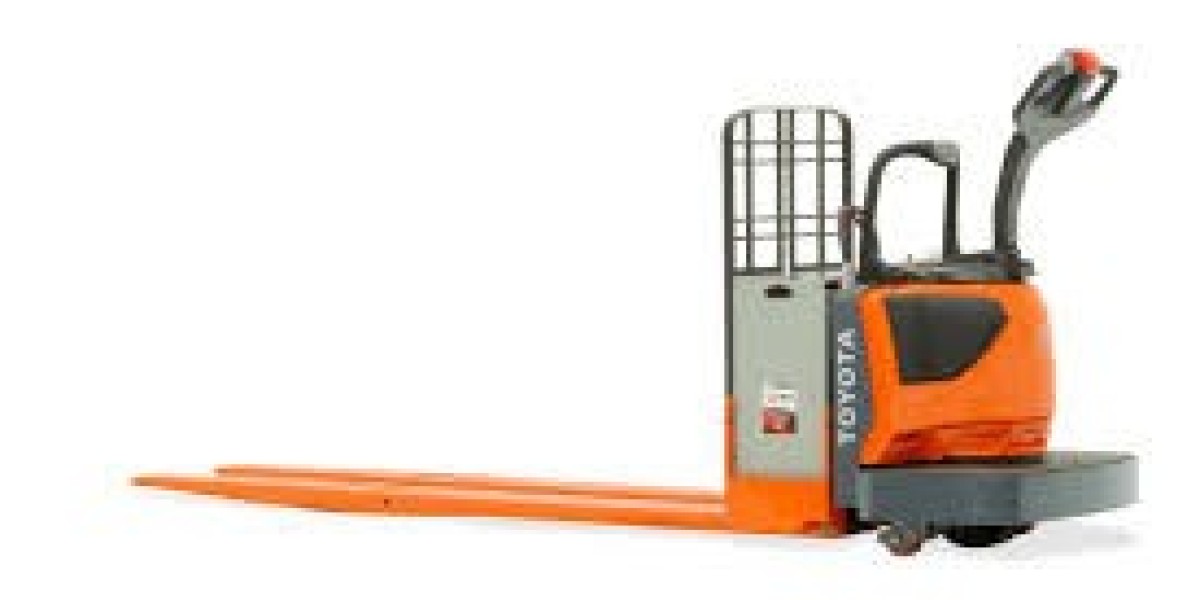Powered Pallet Jacks are an essential tool in modern warehouses, factories, and distribution centers. They make moving heavy loads easier, faster, and safer compared to manual pallet jacks. However, like all machines, Powered Pallet Jacks can experience problems if not properly maintained or used correctly. Understanding these common issues and knowing how to fix them can save time, reduce downtime, and extend the life of your equipment.
1. Battery Issues
One of the most common problems with Powered Pallet Jacks is battery-related. Batteries are the heart of these machines, and if they are not charging properly or losing power quickly, the pallet jack will not function efficiently.
Common signs:
The pallet jack stops working unexpectedly.
The battery indicator shows low power even after charging.
The jack moves slower than usual.
How to fix:
Always use the correct charger and ensure the charging connections are clean.
Avoid overcharging the battery, as it can reduce battery life.
Check the water levels in lead-acid batteries and refill with distilled water if necessary.
Replace old or damaged batteries to maintain consistent performance.
2. Hydraulic Problems
Powered Pallet Jacks use a hydraulic system to lift and lower loads. Hydraulic issues can prevent the jack from lifting properly or cause it to sink while holding a load.
Common signs:
The jack does not lift to the full height.
The pallet slowly lowers without input.
Leaking hydraulic fluid.
How to fix:
Check the hydraulic fluid level and refill it if it is low.
Inspect seals, hoses, and fittings for leaks. Replace any damaged parts.
Bleed the hydraulic system to remove trapped air, which can affect lifting.
Avoid overloading the jack, as this can damage the hydraulic system.
3. Motor Malfunctions
The motor powers the movement of Powered Pallet Jacks. Motor problems can make the jack sluggish or prevent it from moving entirely.
Common signs:
The jack does not move even when the throttle is engaged.
Strange noises or overheating from the motor.
Intermittent movement or jerky operation.
How to fix:
Inspect electrical connections to ensure they are clean and secure.
Check fuses and circuit breakers for faults.
Clean or replace the motor brushes if they are worn out.
Avoid overworking the motor by not exceeding the jack’s load capacity.
4. Wheel and Caster Problems
Worn or damaged wheels and casters can affect the maneuverability of Powered Pallet Jacks, making it difficult to steer and causing uneven wear on floors.
Common signs:
Difficulty turning the pallet jack.
Unusual noises when moving.
Wheels that wobble or are visibly damaged.
How to fix:
Inspect wheels and casters regularly for wear and tear.
Replace damaged or worn wheels immediately.
Keep the wheels clean from debris, dirt, and grease.
Lubricate moving parts to ensure smooth operation.
5. Brake Issues
Brakes are crucial for controlling Powered Pallet Jacks safely. If the brake system fails, it can lead to accidents or uncontrolled movement of heavy loads.
Common signs:
The pallet jack does not stop as expected.
Brake engagement feels weak or inconsistent.
Grinding or squealing noises when braking.
How to fix:
Check brake pads and replace them if worn.
Adjust brake tension according to the manufacturer’s instructions.
Inspect brake cables and connections for wear or damage.
Regularly test the brakes before using the pallet jack.
6. Steering or Control Handle Problems
The control handle is the main interface for operating Powered Pallet Jacks. Issues with the handle can make it difficult to move or lift loads.
Common signs:
Loose or unresponsive handle.
Difficulty controlling direction or speed.
Handle stuck in one position.
How to fix:
Tighten loose bolts or screws on the handle assembly.
Lubricate moving joints to ensure smooth operation.
Inspect the wiring inside the handle for damage or corrosion.
Replace the handle assembly if it is severely worn or broken.
7. General Maintenance Tips
Preventing problems with Powered Pallet Jacks is easier than fixing them. Regular maintenance can extend the life of your equipment and ensure safety.
Tips:
Conduct daily inspections before use. Check batteries, wheels, hydraulics, and brakes.
Keep the pallet jack clean and free of debris.
Follow the manufacturer’s guidelines for charging and servicing.
Train operators to use the pallet jack properly and avoid overloading.
Schedule periodic professional servicing to catch issues early.
Conclusion
Powered Pallet Jacks are vital for efficiency and safety in any workplace. Knowing the common problems, such as battery issues, hydraulic malfunctions, motor failures, wheel damage, brake problems, and control handle issues, can help prevent downtime and costly repairs. Regular inspections, proper usage, and timely maintenance ensure that your Powered Pallet Jacks remain reliable and productive for years. By taking care of these machines, businesses can save money, improve safety, and maintain smooth operations in warehouses and industrial environments.








